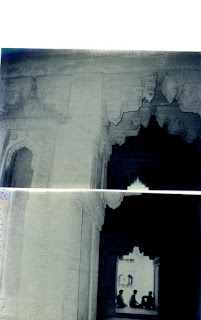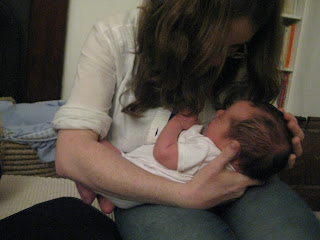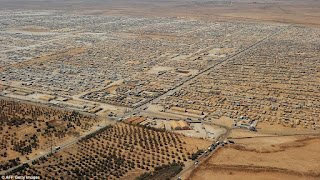Trishna vs After the Wedding (and their respective uses of 'India')
She was so close to him she couldn’t see. He said something muffled she couldn’t understand. She hoped it was about her clothes. But when she realized it was about her body, she felt a pang of disappointment, the wince of an empty expectation. Wishing it had been about herself.
I read Tess a few years ago. The motifs stuck with me as isolated occurrences disengaged from the spine of the narrative which joined it all together. With Hardy, there are those guttural reminders of the hierarchy of things- I mean the ‘potential’, ‘natural’, ‘deserved’ hierarchy. The true love which burns ever so brighter than all the pretended versions that gloss the surface for expectation’s sake. Of the inherent force inside the human once all that procrastination, the half baked limp, diluted wiliness that we don’t want to be has been scraped away, washed through. Its cobwebs cut through by open drafts, the scent of leaves rotting, spring mornings, the gust of wind conveyed through the lattice of countless leaves held on wavering branches, blackened by moss and rain and the white of joyous brooks and fine light underneath.
And yet, here, we are talking about India, which with the exception of school book readings (or the nostalgia of the fantastical traveler) bares only a very abstract resemblance to industrialising England. That’s why Trishna feels like a first film although its actually by a weathered and wrinkled old English man- famous for his portrayals of ‘the other’.
‘After the Wedding’ on the other hand, feels like it’s by a wrinkly who has been fine tuning the innuendos of subtle implication for decades and is now reflecting on the demise of most things- youth, hope, idealism, but not the exotic. India is still exotic, or that is the reluctant function it concedes to celluloid. The weak arm, the whinge? India fills the opening scene- it amasses all our feelings in one crescendo. It is swarming with spirited children, cheekbones flushed with sot, bare foot women holding empty bowls up to the golden haired white man, who dispels the cliché somewhat with a stoic briskness, with none of the aura of the religiously inspired. A doubt and a kind of genuine subservience to place. I like it as he sits in the back of a pickup truck, the straight line of his nose buffer to the world for the small boy crouching under his arm. So that it is, the frantic crowd, somehow clarified, made real by the absence of a pure hero. Still, the function of these beginning scenes threaten to represent guilt or innocence eventually lost. We know from the dust jacket that they are not the predominant setting, just the interlude. And they deliver. They come to mean ‘the forgotten’, the ‘real’ and yet the ‘unsophisticated’- basically the youth, the lost purity inside us all. In all its moments, all the intricacy invested in the exchanges and hanging implications between characters- Jung could have summed it up in a few sentences. Innocence (India) lost, maturity, complexity (Denmark), however ugly, however materialistic, human nonetheless, gained.
So, After the Wedding is overtly adult in the way it deals with the patchworks of people’s emotions and doesn’t let, in the typically Anglophonic tradition, its overt aspiration to communicate with ‘the audience’ whitewash any recognition of its characters as independent beings. But Trishna is better. Even though it commits all the crimes suggested above. It bellows at its audience, shudders our shoulders with insistent baselines (the choice of which the director perhaps delegated to some recent A level music production graduate). It shows it all the expected sex scenes, its heroine waves her legs under the full spectrum of designer dresses (and her ‘ethnic gear’). And yet, the story has force, which gives the method, however sensationalist- a justification. In comparison, After the Wedding is not a story, rather a half baked accumulation of happenings.
What is so wonderful about Trishna is it portrays a very typical situation- the poor woman swept by a rich man into a world that, duped by the ‘good life’ portrayed and expended on the nation’s youth, she’d hoped was secretly possible. It shows how her village simplism is kept under wraps in the musings of the avant-garde Mumbai creatives. How aspirations and dreams are in form so subtly similar, despite the fact they might differ so drastically in content. It reminds you of the inkling basis lying behind the premise of any film- that the fear, or lose, or desperateness you see portrayed (positive themes are generally given far less scope) is also yours. That the viewer knows the apprehension of the character, regardless of the fact that they are divided by time and place and circumstances.
It rubbishes the humbleness you might have presumed it would use to define India by introducing various juxta positioned contexts – all real, all Indian and yet none completely absolute. Allowing you, as Hardy does, to doubt the earnestness of appearances.
And at the end it doesn’t give you anyone definite to blame. When you stare out at the dusty hillscape with her, the tragedy is shared, is endemic, the dream is betrayed. The confines of the old life return. And it is this disruption which needs revenging. Just as in Tess and Jude the Obscure, morality hinges at all the fringes, but isn’t allowed to take up centre stage. It makes you wince and regret. Feel bloated, guilty yet complicit in all waste, it rings true and yet all the inelegance is also satisfying.
To me, the idea of ‘redoing’ classics of the British cannon in India is presumptuous and in this case, seems more like a marketing tool or educative claim rather than the attempt to be insightful. But if it wasn’t clothed as a remake of Tess, it could have held its own quite feasibly. The Tess story is selectively rummaged through and characters are welded and melded at leisure. Maybe it’s just that in labeling it an ‘interpretation’, Winterbottom found recourse from the accusation that he was attempting to make a film about people in a place he wasn’t from and had never lived. Hardy is robust enough to hide behind and, if the need arises, claim ‘universality’ issues from. ‘I don’t know, but Hardy did’, or the like.
But we don’t need Hardy to universalise the tale of a poor girl from a village caught up with a rich boy from the city. Countless myths and legends told it for us long before he arrived. Stop, I forget, our myths and legends are all boxed between covers, accessible only in databases or on the review pages. Or are some still forming on people’s tongues? And we just have to be more astute in finding them part formed (incompletely expressed) in their minds?
I thought about this when I was watching the BBC Panorama report on Homs the other night. All other comments aside. Films and books, old worn stories, myth and legend and nationalist rhetoric is moulded from disasters, exoduses and massacres. Repeated memory and recollection’s spiny ways are traced from it. And yet, has that one in Homs been hijacked before it was even spoken? Will the stories of those dumb felt children chilled as Paul Wood’s photographer elbows past them ever really be heard in a neat paperback or indie film? Somehow I think not theirs. Though doubtless they’ll be spoken FOR by the ensuing raucous of advocates of this or that..



Comments
Post a Comment